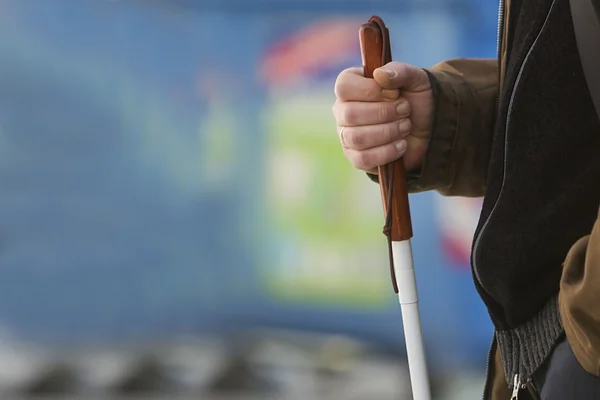Study Reveals ‘Sound’ as the New Way Blind People Recognize Faces.
A new study published in the journal PLOS ONE has found that blind people can recognize basic faces using sound. The study, conducted by researchers from Georgetown University Medical Center and the Neural Rehabilitation Laboratory at the University of Louvain in Belgium has revealed that blind individuals can effectively recognize faces using sound alone.
This remarkable finding was achieved through the development of a specialized device that converts images into auditory patterns, enabling individuals with visual impairments to perceive and decipher facial features through sound. The device, known as a sensory substitution device (SSD), effectively translates visual information into auditory cues, allowing blind individuals to experience the world around them through sound.
The study involved six blind participants who underwent fMRI scans while being presented with images of basic faces, such as happy, sad, and angry emojis. As the participants listened to the corresponding sound patterns generated by the SSD, their brain activity was monitored and analyzed.
The results were astonishing. The researchers observed that the fusiform face area (FFA), a region of the brain crucial for face recognition in sighted individuals, also exhibited significant activation in the blind participants when they recognized faces using sound. This suggests that the FFA is not solely dedicated to visual processing but also plays a critical role in processing facial information through other sensory modalities, such as sound.
“This study demonstrates that the fusiform face area encodes the ‘concept’ of a face regardless of input channel, or the visual experience, which is an important discovery,” stated Paula Plaza, one of the lead authors of the study, who is now at Universidad Andres Bello in Chile.
The study’s findings have significant implications for the development of new technologies and therapies for individuals with visual impairments. By understanding how the brain processes faces using sound, researchers can design more effective SSDs that can help blind individuals recognize faces and other objects, enhancing their independence and quality of life.
Additionally, the study’s findings highlight the remarkable plasticity of the human brain, its ability to adapt and learn new ways of processing information even in the absence of normal sensory input. This resilience of the brain provides hope for the development of therapies that can address a range of disabilities and sensory impairments.
The research team is currently working to improve the resolution of their SSD, allowing them to present more complex facial images and enable blind individuals to identify individual faces. They envision a future where blind individuals can use SSDs to recognize familiar faces in real-world settings, fostering social interactions and enhancing their overall quality of life.
This groundbreaking study is a testament to the power of human innovation and the potential of technology to bridge the gap between individuals with disabilities and the sighted world. As research continues to advance, we can expect even more remarkable advancements that will empower individuals with visual impairments to experience the world with greater clarity and independence.
KEY TAKEAWAY A groundbreaking study has demonstrated that blind individuals can effectively recognize faces using sound alone, thanks to a specialized device that converts images into auditory patterns. This remarkable finding has profound implications for the development of new technologies and therapies for individuals with visual impairments, opening up possibilities for enhancing their independence and quality of life. The study also highlights the remarkable plasticity of the human brain, its ability to adapt and learn new ways of processing information even in the absence of normal sensory input, providing hope for the development of therapies that can address a range of disabilities and sensory impairments. - STUDY
Other Ways Blind People Can Identify Individuals
Beyond the remarkable ability to recognize faces using sound, blind individuals have developed a variety of strategies and techniques to identify people they know and interact with. Here are some of the common methods:
- Voice recognition: Blind individuals are often adept at recognizing the voices of familiar people, even if they haven’t heard them in a while. They can identify friends, family members, and even strangers by their distinctive vocal patterns, intonation, and speech patterns.
- Touch and smell: Blind people can recognize people by the way they feel, such as their unique skin texture, body shape, and even smell. They may also pay attention to how people walk, move, and carry themselves.
- Social cues and context: Blind individuals can infer information about a person’s identity through social cues and context. They may notice the person’s interactions with others, their clothing, accessories, or belongings, and the setting in which they encounter each other.
Personal objects: Blind individuals may keep small objects or items associated with specific people to aid in recognition. For instance, a certain scent, a piece of jewelry, or a personal memento can serve as a distinctive identifier.
Unique gait and mannerisms: Blind people can become quite attuned to the way people move and carry themselves. They may recognize friends or family members by their unique gait, posture, or mannerisms.
Learning and memory: Blind individuals employ their extraordinary memory skills to store and recall information about people they’ve encountered. They may remember specific details about their interactions, conversations, or even their physical appearances.
Assistive technologies: In recent years, advancements in technology have provided assistive tools that can further enhance face recognition for blind individuals. Devices like eyeglasses equipped with cameras and audio output can translate facial features into sound, enabling the user to identify people based on their visual cues.
Social interactions and practice: Blind individuals constantly engage in social interactions, gradually learning to recognize people through a combination of the above methods. With practice and experience, their ability to identify faces becomes increasingly refined.
It’s important to note that the specific methods individuals employ may vary depending on their individual preferences, sensory abilities, and prior experiences. The remarkable resilience and adaptability of the human mind are evident in the diverse ways blind individuals navigate the world around them, recognizing and interacting with others despite their visual impairments.
Additional resources:
1. Object Identification for Visually Impaired. Indian Journal of Science and Technology
Continue to check our website for more articles of this kind. And, please use our comment section as well, we would love to hear from you.







